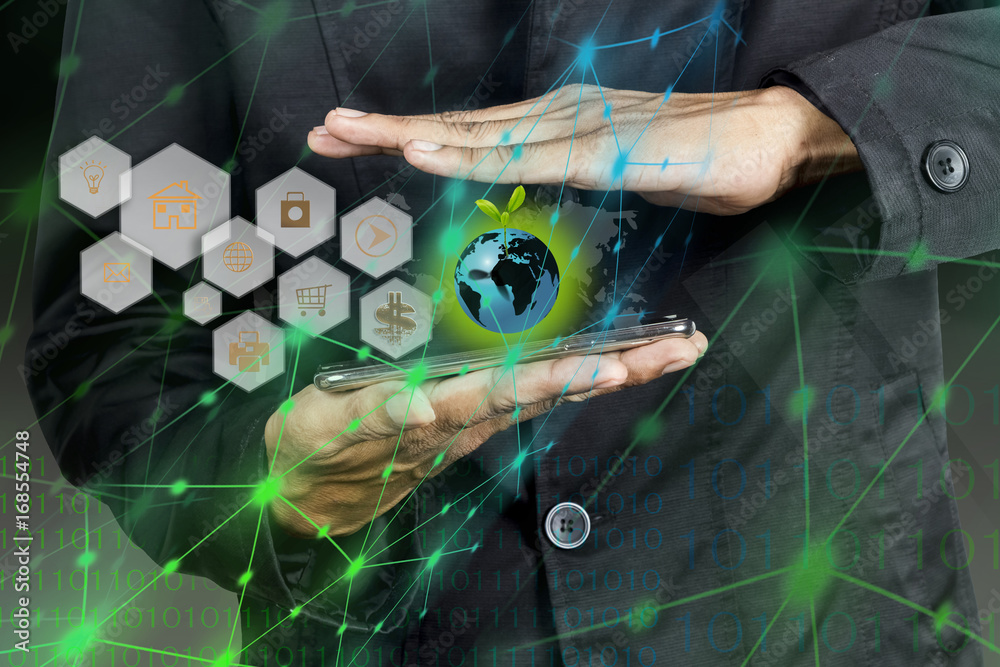by Simon Overton, Educational Enhancement Co-ordinator
In the fast-paced world of educational technology, where innovation drives progress and accessibility is paramount, it’s easy to overlook the environmental footprint of our digital endeavours. Learning technologists play a crucial role in shaping the future of education, but with this role comes a responsibility to minimise the environmental impact of our work. In this blog, we’ll explore practical strategies that learning technologists can implement to reduce their environmental footprint and promote sustainability in educational technology.
The Environmental Impact of Educational Technology
Before delving into solutions, it’s important to understand the environmental implications of educational technology. While digital learning platforms and online resources offer numerous benefits, they also contribute to energy consumption, electronic waste, and carbon emissions. Data centres that host online learning platforms consume vast amounts of energy, and the production, distribution, and disposal of electronic devices contribute to pollution and resource depletion.
Moreover, the rapid pace of technological advancement often leads to shorter product lifecycles and frequent upgrades, resulting in a significant accumulation of electronic waste. As learning technologists, it’s essential to recognise these challenges and proactively seek sustainable solutions.
Sustainable Strategies for Learning Technologists
- Optimise Digital Infrastructure: One of the most effective ways to reduce the environmental impact of educational technology is to optimise digital infrastructure. This includes consolidating servers, adopting cloud-based services, and leveraging virtualisation technologies to maximise resource efficiency. By reducing the number of physical servers and data centres, we can minimise energy consumption and carbon emissions associated with hosting online learning platforms.
- Promote Energy Efficiency: Encourage energy-efficient practices among students, educators, and administrators. Provide guidance on power-saving settings for devices, promote the use of energy-efficient hardware, and educate users on the environmental benefits of minimising screen time and unplugging devices when not in use. Additionally, explore opportunities to power digital learning initiatives with renewable energy sources such as solar or wind power.
- Curate Sustainable Digital Content: When developing digital learning materials, prioritise sustainability by choosing eco-friendly formats and reducing file sizes to minimise bandwidth usage. Opt for open educational resources (OER) and creative commons licensed content to reduce the need for excessive replication and distribution. Encourage collaboration and resource-sharing among educators to minimise redundancy and promote efficiency in content creation.
- Extend Product Lifecycles: Encourage users to extend the lifespan of electronic devices by providing guidance on proper maintenance, repair, and refurbishment. Promote responsible disposal practices by facilitating e-waste recycling programmes and partnering with reputable recycling organisations. Consider implementing buy-back or trade-in programmes to incentivise users to return old devices for refurbishment or recycling.
- Implement Sustainable Procurement Practices: When purchasing new hardware or software, prioritise products with eco-friendly certifications such as ENERGY STAR or EPEAT. Consider factors such as energy efficiency, recyclability, and environmental impact throughout the product lifecycle. Collaborate with vendors to advocate for sustainable product design and packaging, and explore opportunities for bulk purchasing to reduce packaging waste.
- Foster Environmental Awareness: Raise awareness among stakeholders about the environmental impact of educational technology and the importance of sustainability in digital learning initiatives. Provide training and educational resources on eco-friendly practices, and integrate sustainability into curriculum development to instil environmental consciousness in students from an early age.
- Measure and Monitor Impact: Establish key performance indicators (KPIs) to track and measure the environmental impact of digital learning initiatives. Monitor energy consumption, carbon emissions, and electronic waste generation to identify areas for improvement and benchmark progress over time. Use data analytics and reporting tools to identify opportunities for optimisation and inform decision-making processes.
Conclusion
As learning technologists, we have a responsibility to prioritise sustainability in our digital learning initiatives and minimise the environmental impact of educational technology. By implementing the strategies outlined above, we can contribute to a more sustainable future for education while empowering learners to become environmentally conscious global citizens. Together, we can harness the power of technology to facilitate learning while preserving the planet for future generations. Let’s embrace sustainability as a guiding principle in educational technology and pave the way for a brighter, greener future.
Written with assistance from Chat GPT.



